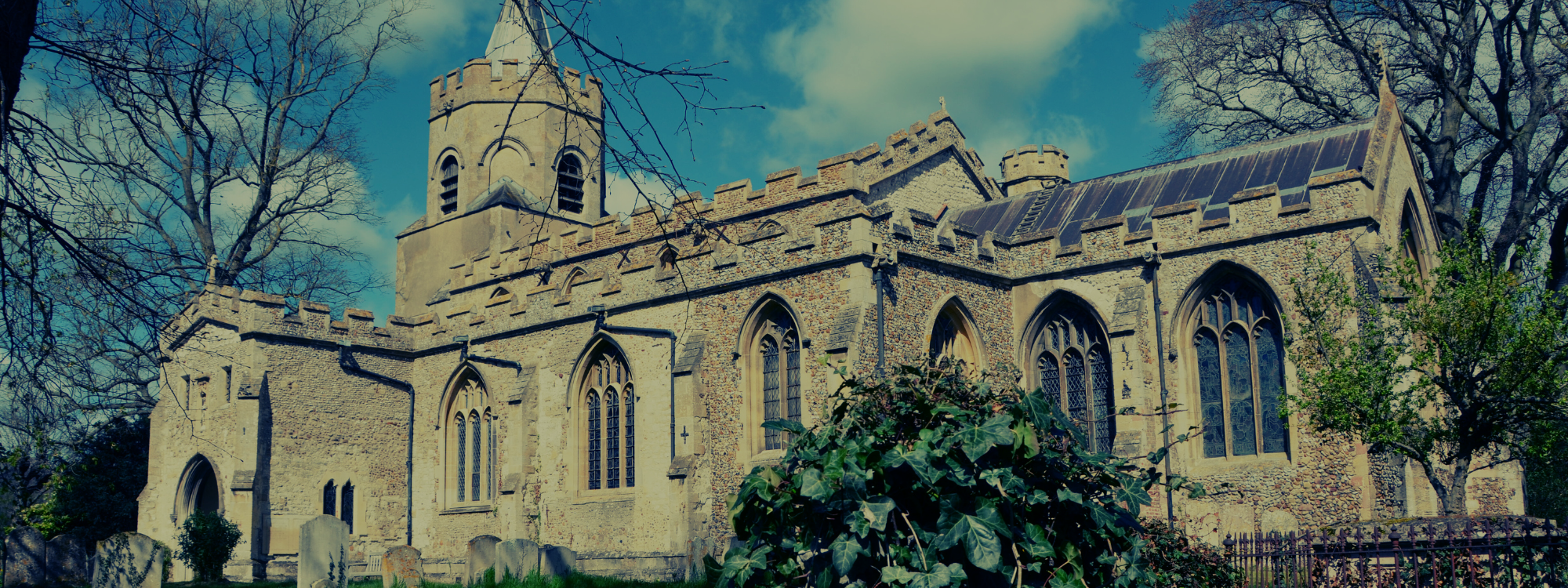History

Our church has stood on this site for 600 years. It was built about 1400 at the expense of Thomas Patesley who was then the incumbent. A rubbing of the original brass on his tomb hangs on the west wall (9*). This building probably replaced a Norman church on the site the only remains of which are seen in the niche (6) and the piscina (7) at the eastern end of the south aisle, now the Resurrection Chapel.
The church suffered at the hands of William Dowsing, a notorious Puritan iconoclast who paid an official visit to the church in 1643 and ordered, amongst other things, the destruction of the original stained glass only fragments of which can now be seen in the windows on the north side of the nave. The original 14m high stone spire was blown down in a gale in 1708 and the tower collapsed in 1798. These were replaced in the first years of the 19th Century using local labour with material salvaged from the wreck. As a result the nave lost one complete bay at its western end, leaving it more or less square in plan. The restoration of the interior, including the laying of the Minton tiles on the floor, was largely carried out during the incumbency of the Revd A.T.Crisford (1852-83). The restoration of the chancel was carried out at that time by the lay rectors, the Master and Fellows of Jesus College, Cambridge. The stained glass (5) in the chancel, examples of the early work of the firm of Constable of Cambridge, are memorials to Mr Crisford’s son.
Above the chancel arch is a “Doom” (2), a representation of the Last Judgment, only recovered from under layers of limewash in the middle of the 19th Century. The chancel or rood screen (1) is a restored original. Traces of coloured paint dating from the 15th Century can be found on it. Carved into the back of this screen are representations of the Green Man, an ancient pagan entity. The pulpit (3) dates from 1636 and was originally a “three decker”. At the east end of the north aisle is a parclose screen (4) which formerly enclosed a chantry (a chapel dedicated to the saying of Masses for the Dead). The plinth of the font (10) dates back to the earliest days of the building as it bears the arms of the diocese of Ely and those of John Fordham, Bishop of Ely 1388-1425. There is a ring of 8 bells. Above the porch (8) is a room which used to provide accommodation for a curate.
Download the church plan
Anyone who is interested in a more detailed description of the church can download it here.